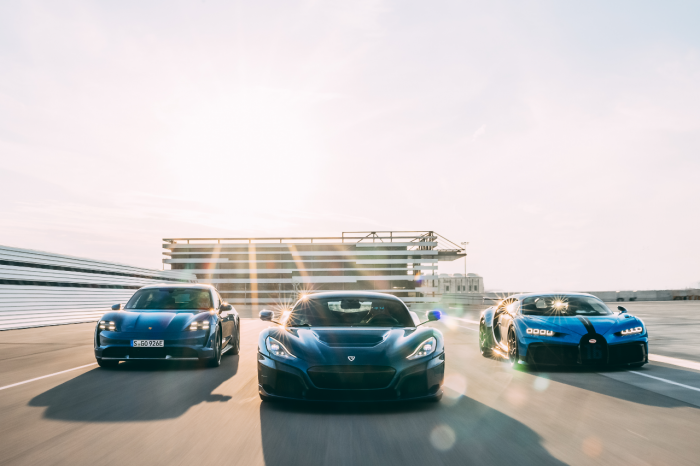Back in July 2021, Porsche and Rimac announced that the two auto superpowers have agreed to set up a joint venture that incorporates Bugatti. Oliver Blume (Porsche CEO) and Mate Rimac (Rimac CEO) have signed the corresponding agreements and announced the name of the new hypercar manufacturer: Bugatti-Rimac.
The two companies are being described as “the perfect team” and the joint venture will have its headquarters in Zagreb (Croatia) and is scheduled to be established in the fourth quarter of 2021. Oliver Blume told the press that “The Croatians are fast movers in terms of battery and software development, low-volume high-end products, prototyping, and forward-thinking as far as the zero-emission big picture is concerned.”
The 112-year-old French crown jewel in parent company Volkswagen AG’s crown, Bugatti, sells the kind of cars that most could only dream of. Superheroes in the world of cars such as the 1,480-horsepower Chiron Pur Sport, which gets eight miles per gallon in city driving. Under the umbrella of the new company, the Bugatti and Rimac brands are planning to initially produce two hypercar models: the Bugatti Chiron and the all-electric Rimac Nevera. The brand traditionally does not disclose specific sales results but is known to deliver roughly 80 vehicles globally each year.
About Porsche
Ferdinand Porsche established an engineering office in Stuttgart in the 1930s, laying the foundation for the luxury car company. The German automaker designed and built vehicles such as the first Volkswagen before releasing a sports car of its own in 1949, the 356. Now a global icon, Porsche offers a range of fast and beautiful cars.
Porsche will play a strong role in the joint venture as a strategic partner. Oliver Blume and Lutz Meschke will become members of the Supervisory Board at the new Bugatti-Rimac. Once fully operational, the joint venture will have approximately 430 employees with around 300 at the company headquarters in Zagreb and 130 at the Bugatti site in Molsheim.
About Rimac
Rimac Automobili design, engineer and build some of the most advanced automotive technology in the market. From developing and manufacturing era-defining hypercars to inventing and building ground-breaking new technologies.
In just 10 years, Rimac Automobili has progressed from a one-man garage start-up to starting a new company with one of the world’s most iconic car brands to create Bugatti Rimac. The Croatian-based brand has proven that they have what it takes to be the trailblazers of the car industry, setting the performance and technological benchmark for others. Uniting Rimac’s technical expertise and lean operations with Bugatti’s 110-year heritage of design and engineering prowess represents a fusion of leading automotive minds.
What does this mean for Bugatti?
With the new partnership, Bugatti is to become part of a new joint venture between Rimac and Porsche. The new joint venture, named ‘Bugatti Rimac’, means that Bugatti shares will be transferred out of the Volkswagen Group and into this new, forward-thinking group automotive company.
Bugatti Automobiles S.A.S. will continue to exist in the new joint venture and all Bugatti models will still be produced at the Bugatti factory in Molsheim, France. Jointly developed Bugatti models are planned for the longer term.
Many people in the industry have been left wondering whether Bugatti will join Rimac in the electric vehicle market. In a word, not yet. In this partnership, Rimac seems to be the only brand sticking with the EV plans.
Mate Rimac announced “I want to make a profitable company, but we will not just recycle what we have. We will not just restyle the Chiron to make a new car, or just hybridise the Chiron, we are developing a completely new product from the ground up. And that product will still have a combustion engine.”
“Within this decade there will be fully electric Bugattis, but I can also tell you that at the end of this decade there will also still be combustion-engined Bugattis. Heavily hybridised of course. There is still time for the combustion engine at Bugatti.”
“However, we are thinking longer term and Bugatti has a lot of diversity in its heritage that can be used to make products that are not only hypercars. Therefore, there is the opportunity to make exciting, different cars that are both strongly electrified and fully electric.
It seems that Volkswagen Group no longer wants to pour their money and manpower on the brands acquired by the former CEO. Instead, like many car makers like them, they want their resources to be devoted to fund the future of motoring – electrification, digitalisation and autonomous driving.
